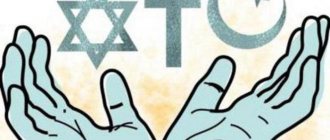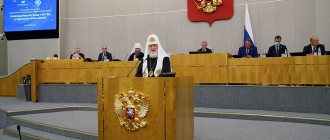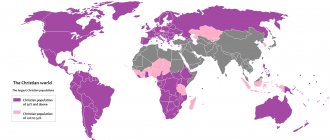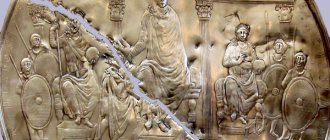Christianity in Romania is recognized as the dominant religion. It appeared in the country many centuries ago and therefore has its own national flavor. For example, the church of the village of Biertan in Transylvania is known all over the world for its special church. It houses a “room for reconciliation for those getting divorced.” People come here before receiving a divorce document.
Local couples live here for two weeks in cramped conditions and sleep on the same bed, eat at the same table, are content with one spoon, one plate and one table. As a result, in 300 years, only one case of divorce has been recorded here.
Story
The ethnogenesis of the Romanian people was influenced by the Thracian tribes who lived on the territory of Romania before our era, as well as the southern and eastern Slavs. The 14th century marked the beginning of the formation of the Moldavian and Wallachian principalities on these lands, which were then captured by the Ottoman Empire. Then Transylvania joined them. Until the 19th century, these areas fought for their liberation, but these attempts were suppressed by Turkish and then Austrian troops. Moldavia and Wallachia then became a united principality under Ottoman influence. After the Russian-Turkish War, the independence of Romania was proclaimed.
In 1925, the Romanian Orthodox Church was granted Patriarchate
On February 4, 1925, the Romanian Orthodox Church was proclaimed the Patriarchate by the decision of the Holy Synod. It is recognized as canonical, as evidenced by the tomos of the Patriarch of Constantinople dated July 30, 1925.
At the same time, Metropolitan-Primate Miron was solemnly elevated to the rank of His Beatitude Patriarch of all Romania, Viceroy of Caesarea of Cappadocia, Metropolitan of Ungro-Vlachia, Archbishop of Bucharest. When Bessarabia became part of the USSR in June 1940, church structures were reassigned to the Moscow Patriarchate. Bishop Alexy (Sergeev) was sent to the Chisinau diocese with his elevation to the rank of archbishop.
Patriarch of All Romania, Governor of Caesarea in Cappadocia, Metropolitan of Ungro-Vlachia and Archbishop of Bucharest Miron (Cristea). Father Miro became the first Patriarch of Romania
The Kingdom of Romania, together with Nazi Germany, attacked the USSR on June 22, 1941. As a result, a Romanian-German agreement was concluded in Bendery on August 30, 1941, according to which the region located between the Dniester and Southern Bug rivers was assigned to it.
The new region was named Transnistria. An Orthodox mission was opened here, headed by Archimandrite Julius (Scriban). In Transnistria, the activities of other Orthodox organizations, including the Ukrainian Autocephalous Church, were banned. After the restoration of Soviet control over Transnistria in August 1944, the territory came under the jurisdiction of the Moscow Patriarchate.
Appearance
Romanians belong to the European anthropological type. They have Slavic features, but their long stay under Turkish rule left a certain imprint on their appearance. Initially, the Romanian nation was fair-haired and light-eyed. The admixture of Turkish blood made the people darker and darker-haired. Romanians have retained delicate facial features, which, coupled with dark hair and eyes, give them a bright appearance. Girls and men of Romanian nationality are very attractive. They have slender figures and a proud posture. Representatives of the people are of average height, stately. Men are broad-shouldered, women have a beautiful smooth gait.
Romanians are generally dark-skinned, with dark hair, often curly. The eyes are large, brown, framed by thick eyelashes. The nose is straight, regular oval of the face, clearly defined eyebrows. Sometimes there are blue-eyed blondes, but this is more an exception to the rule.
Historical evolution
| Confessions and religious organizations | 1992 Census | 2002 Census | 2011 Census | |
| Traditional Christian denominations | Orthodox | 19 802 389 | 18 817 975 | 16 307 004 |
| Roman Catholic | 1,161,942 | 1 026 429 | 870 774 | |
| Greek Catholic | 223 327 | 191,556 | 150 593 | |
| Old Calendarists | 32 228 | — | — | |
| Old Believers | 28 141 | 38 147 | 32 558 | |
| Serbian Orthodox | — | — | 14 385 | |
| Armenian Apostolic | 2,023 | 775 | 393 | |
| Reformed | 802 454 | 701 077 | 600 932 | |
| Unitary | 76 708 | 66 944 | 57 686 | |
| Evangelical Augustan | 39 119 | 8 716 | 5,399 | |
| Evangelical Lutheran (Synod-Presbyterian) | 21 221 | 27 112 | 20 168 | |
| Neo-Protestant Christian denominations | Pentecostals | 220 824 | 324 462 | 362 314 |
| Baptist | 109 462 | 126 639 | 112 850 | |
| Seventh-day Adventists | 77 546 | 93 670 | 80 944 | |
| Evangelists | 49 963 | 44 476 | 42 495 | |
| Romanian evangelical | — | 18 178 | 15,514 | |
| Jehovah witnesses | — | — | 49 820 | |
| Other | Islam | 55 928 | 67 257 | 64 337 |
| Judaism | 9 670 | 6 057 | 3 519 | |
| Other religion | 56 129 | 89 196 | 30 557 | |
| No religion | 26 314 | 12 825 | 18 917 | |
| Atheism | 10 331 | 8 524 | 20 743 | |
| Undeclared | 8 139 | 11 734 | — | |
| Not available | — | — | 1 259 739 |
Life
Romania is not a country with a high standard of living. There is unemployment here and food prices are quite high. Many people leave to work in more stable European countries. After joining the European Union, gasoline prices increased significantly. This is despite the fact that the oil industry is developed here. In large cities the standard of living is higher than in rural areas. Salaries here are higher, although prices in stores differ from village prices. In villages, many residents live off their vegetable gardens. Despite the fact that the country is considered the homeland of the Roma, their numbers here are small. They mostly live in separate settlements. Recently, Gypsies have been immigrating en masse to France, which has been welcomed by the local population.
A modern Romanian family consists of a husband, wife, and their children. Sometimes they live in the home of one of the parents. Romanians love children, they often have 3-4 children. There is no division of family responsibilities; both parents do household chores equally. Women work and have equal rights with men. The whole family usually gathers for the holidays. Relatives live close to each other to be able to provide support.
Core Belief
Romanians are a very religious people; chapels are found at almost every turn. And in small settlements, almost every large house has its own sanctuary, where lamps are constantly burning and ideal cleanliness is maintained. All churches in the country are kept in good condition, with attention paid to repairs and restoration.
The main religion in Romania is Orthodox Christianity; more than 85% of Romanian citizens are adherents of Orthodox traditions. In addition, there are also Protestants (about 6%) and Catholics (5.5%). Representatives of other faiths live in the country in very small numbers: Islamists (less than 0.5%), Jews (about 0.02%).
Traditions
Romania is a multinational country, so its folklore has absorbed the characteristics of many cultures. Gypsy, Moldavian, Ukrainian, and Hungarian traditions are mixed here. Romanians are very musical, they love to dance and sing. A popular song genre is lyrical doina. This is a romantic folk song consisting of two parts: the first slow and the second faster. Various epic ballads, ritual and shepherd songs are also common. There are many types of collective dances. Romanian residents organize a variety of festivals, including:
- Festival of Contemporary Art;
- National Spring Festival;
- Festival of daffodils, winemaking;
- International festivals of photography, jazz and blues.
Electronic Music Festival in Cluj-Napoca
Since 2002, an international film festival has been held annually in Transylvania. It is competitive and awards are presented by an international jury. The jazz festival attracts world stars of this genre. The host city of Cluj-Napoca won the title of “Youth Capital of Europe” for hosting mass music events. It hosts festivals of electronic, academic, and pop music. The most famous holidays of Romanians include:
- New Year
- Easter
- Christmas
- Day of the Holy Trinity
- Spring Festival.
Labor Day (May 1) and Romanian Unification Day are also celebrated.
Under the communists, Orthodoxy in Romania was not subject to special persecution
After the establishment of the communist regime in 1948, the Romanian Orthodox Church was not subject to significant persecution, while the state strictly controlled church life. Thus, the Church was obliged to follow the instructions of the state Ministry of Cults.
At the same time, the Romanian Orthodox Church was not legally separated from the state. The communists also paid salaries to the Romanian clergy. From 1948 to 1977, the Church was headed by Patriarch Justinian.
Coat of arms of the Romanian Ministry of Cults. During communist rule in Romania, representatives of all religions had to comply with the orders of the Ministry of Religion
After the fall of the communist regime in 1990, the banned Greek Catholic Church was restored. On July 30, 2002, the government of Vladimir Voronin granted the Bessarabia Metropolis official status.
The metropolis within the Romanian Patriarchate is recognized as the legal successor of the Bessarabia Metropolis, which existed in Bessarabia from the time of its annexation by Romania in 1918 until it became part of the USSR in 1940.
In 1992, the former Bishop of the Moscow Patriarchate Peter (Peduraru) headed the restored Bessarabian Metropolis as a locum tenens; in 1995 he was elevated to the rank of metropolitan. In 2018, Ecumenical Patriarch Bartholomew consecrated the new cathedral of the Romanian Patriarchate - the Cathedral of National Salvation.
Patriarch Theoktist (Arepashu). The name of the Patriarch of the Romanian Orthodox Church is associated with its revival in post-communist times
Nowadays, the Romanian Orthodox Church has friction with the Moscow Patriarchate due to the policies of the Romanian Patriarchate on the territory of Moldova. RumPC has 1,425,044 people and 13,527 places of worship in its ranks. The Church is divided into 10 metropolitanates. The highest authority is the Holy Synod, consisting of the Primate (Patriarch) and all bishops of the Church.
The most widespread Orthodoxy in Romania is also represented abroad among the Romanian diaspora. There is, for example, the Australian and New Zealand Diocese of the Russian Orthodox Church.
By leaving a comment, you accept the user agreement
Housing
An ancient type of Romanian housing was a dugout. They dug a round hole in the ground and trampled down the floor. The roof was a hut made of boards or logs. It was covered with reeds and straw. The food was cooked over a fire. The size of the room ranged from 1.5 to 3 meters. Based on these dwellings, they began to make wooden houses sunk into the ground. They had log or wicker walls. Often they made 3- and 4-room buildings. There were different types of vestibule, living room, and chamber.
Later they began to build houses from brick and stone (19th century). This type of construction is still common today, along with log construction. The most common are hip roofs. In villages they are covered with tiles or boards. The Southern Carpathians are characterized by wooden houses standing on a stone foundation. They have balconies, and storage rooms are located in the basement. The open hearth, common in the old days, was replaced by Russian stoves.
The interior of a Romanian home consists of wooden furniture and ceramic products. The bed is covered with a blanket with a national ornament. The bedroom contains many pillows, dressed in beautiful embroidered pillowcases. Things are stored in a large chest. Ceramic dishes are placed on shelves along the walls. Household utensils, wooden instruments are decorated with carvings. Embroidered towels are hung everywhere, the table is covered with a tablecloth.
Notes
Symbols Coat of Arms • Flag • Anthem (all anthems) Policy Political system • President • Prime Minister • Parliament • Government • Constitution • Political parties • Foreign policy (Moldova) • Domestic policy Armed forces Ground Forces • Air Force • Navy Geography Administrative division • Cities (Capital) • Development regions • Counties • Municipalities • Communes Society Population • Languages (Romanian • Russian) • Sports • Education • Science • Health • Religion (Orthodoxy • Protestantism) Economy Currency • Tourism (national parks • world heritage) • Transport (Railways) Connection Telephone • Internet (.ro) • Television • Radio • Post (history and stamps) • Media Culture Literature • Mythology • Architecture • Holidays • Sights • Music Romania Portal • Romania Project
Cloth
Romanians have long raised sheep, goats, and flax, so they were able to make their own clothes. Weaving and embroidery were common among them. Previously, linen and hemp fabrics were widely used, now more cotton fabrics are used. A men's suit consists of the following elements:
- White canvas pants
- Long white shirt
- sleeveless shirt
- Wide belt
- Hat or cone-shaped cap
- Boots.
A long shirt is worn over pants and tied with a wide red belt. The collar is made stand-up or turn-down. The front of the tunic is decorated with embroidery, as are the cuffs. The sleeveless vest can be white, red, black. It is decorated with ornaments and contrasting embroidery. Outerwear is made from cloth or sheepskin (in cold regions).
Women's attire is similar to men's. This is a white blouse with embroidery, a sleeveless vest, decorated with floral patterns. Women wear a long red skirt that is gathered or wrapped around the hips. In some areas, a red apron is worn over the white skirt. The head is covered with a scarf or scarf. Shoes are boots or shoes with a long narrow top with laces. Beads and monistos are worn as decoration.
Behavior rules
Moldovans, Romanians and Gypsies have common and distinctive features. What they have in common is that all these peoples are amazingly musical, love songs and dances. Regarding temperament, it should be noted that the most temperamental of them are gypsies.
Romanians are gypsies - this conclusion is often made based on the external similarity of these two peoples. There is also an opinion that Romanians and Moldovans also belong to the same ethnic group, separated territorially by a border. Each of these peoples has similar cultural characteristics and external similarities. But still, these are different ethnic groups with their own specific features.
Food
Romanian cuisine is a synthesis of dishes that came from various European and Balkan countries. It has Greek, Austrian, German, Ukrainian dishes. Thanks to this, Romanian food is very varied and tasty. Meat is an active component of Romanian cuisine. Pork, lamb, veal, duck, chicken are used. It is smoked, fried on a grill, and made into sausages. You can often see fish and seafood on the table. Gifts of nature are also used: mushrooms, berries, herbs. The daily menu includes a lot of porridges and soups. Mamaliga is a popular product - a steeply brewed porridge based on corn flour. Stewed vegetables, potatoes, beans, and rice are served as a side dish. Sour cream, feta cheese, and cottage cheese are made from milk. Cheese is made not only from cow's milk, but also from sheep's and goat's milk. Romanians love baking; they always have a lot of desserts and sweet pastries. Popular dishes are:
- Moussaka is a Greek casserole of meat and vegetables. Tomatoes, eggplants, mushrooms, and potatoes are added there.
- Stufat is a roast based on lamb ribs with onion sauce.
- Mititei are sausages made from lamb meat with spices, fried on a grill. Reminds me of Turkish lula kebab.
- Toba is a stuffed pork belly.
- Sarmale is an analogue of Georgian dolma. Minced meat is wrapped in grape leaves and stewed.
- Plaki de peste is a fish stew with a vegetable side dish.
Many sweets are made from flour. These are pies with apples, cottage cheese, berries, donuts with jam, biscuits, bagels, strudels. Wide variety of drinks. Along with tea and coffee, they drink juices, compotes, and fruit drinks. The developed wine industry supplies a variety of red and white wines. Palinka, a fruit brandy and various liqueurs, is popular with tourists. Vodka infused with pears, plums, and apples—tsuiki—is popular.
[edit] Language
Romanian belongs to the eastern group of Romance languages of the Indo-European language family. Written texts on it have been known since 1521[27]. The modern literary language developed during the 19th and 20th centuries. based on many Eastern Romance dialects, the formation of which in turn was influenced by the ancient Thracian language, as well as the Church Slavonic language, which was liturgical from the 9th century[28][29]. Since the mid-19th century, Romanian linguists have intensified the process of re-romanization - replacing Slavic words with Romance ones and including Romance neologisms. Nowadays, writing based on the Latin alphabet is used.
Famous people
Among the Romanians there are many famous singers, musicians, composers:
- Marius Mora, Andrey Ropcha are musicians in the famous Eurodance group Morandi. The team is the winner of various MTV awards.
- Tudor Gheorghe is a world-famous musician, singer, and actor.
- Jike Petrescu is an artist, composer, folk singer.
- János Körösi is a jazz musician.
- Madalina Manole is a famous pop singer.
- Alexandra Stan is a singer, winner of the “Best Singer” music awards, MTV in various categories.
- Inna is a house and Eurodance singer with a coloratura soprano, winner of MTV awards for best performer.
[edit] Sources
- Romanian
- Resultate definitive ale Recensământului Populaţiei şi al Locuinţelor – 2011 (characteristic demografice ale populaţiei)
- First Known Europeans Identified
- Dacians, Thracians, Getae
- Dacia - Province of the Roman Empire
- Stefano Bottoni, National Projects, Regional Identities, Everyday Compromises. Szeklerland in Greater Romania (1919-1940) // Hungarian Historical Review 2, no. 2 (2013). P. 477—511
- Geography and ethnic geography of the Balkans to 1500
- Analysis of mitochondrial DNA haplotypes of old human populations from the Bronze and Iron Age from Romania
- Romanian Genetics: Abstracts and Summaries
- Urdea Olimpia, SERICULTURE IN ROMANIA, BETWEEN TRADITION AND AN UNCERTAIN FUTURE
- Anthony Harding and Valerii Kavruk, A Prehistoric Salt Production site at Baile Figa, Romania
- Bruncovenesc style
- Traditional costume in Romania
- Romanian Traditional Foods
- Traditional Cuisine in Romania
- History of Romanian wine
- Arts and Crafts
- Doina
- Traditional music in Romania
- Romanian couple dances
- Bibles Romanian (Română)
- Church of Romania
- A SHORT HISTORY OF TRANSYLVANIA
- XVIth CENTURY OF HUNGARIAN PROTESTANTISM
- ROMANIAN GREEK-CATHOLIC CHURCH HISTORY
- Religion
- lmp.ucla.edu
- The History of the Romanian Language
- omniglot.com
Character
Romanians are a calm, unhurried nation. They give the impression of friendly, welcoming people who will help with advice and tell you what to do in a difficult situation. Some tourists from Russia believe that they are very similar to Russians - just as attentive and responsive. Romanians are also hospitable; when visiting, they treat you to various homemade delicacies, wine, and liqueurs.
There is an opinion that Romanian men have a temperamental character and show aggression towards their wives. Perhaps this applies to the Romanian Roma, who form an ethnic minority. Girls who married Romanians speak of them as cheerful, cheerful people, passionate lovers. Romanian men are gallant and romantic. They are able to surround the girl with care, attention, and give gifts. They like beautiful, spectacular girls who increase a man's self-esteem.
Content
- 1 Religious denominations 1.1 Eastern Orthodoxy
- 1.2 Roman Catholic Church (Latin Rite)
- 1.3 Greek Catholic Church (Byzantine Rite)
- 1.4 Protestantism
- 1.5 Islam
- 1.6 Judaism
- 1.7 Other religions
- 1.8 Paganism
- 1.9 Irreligion
- 3.1 History



![WITH HISTORY] ANCIENT BOOK ''STOGLAV'' 1863! IMPERIAL ACADEMY ...](https://life-cheb.ru/wp-content/uploads/s-istoriej-drevnyaya-kniga-stoglav-1863g-imperatorskaya-akademiya-330x140.jpg)





